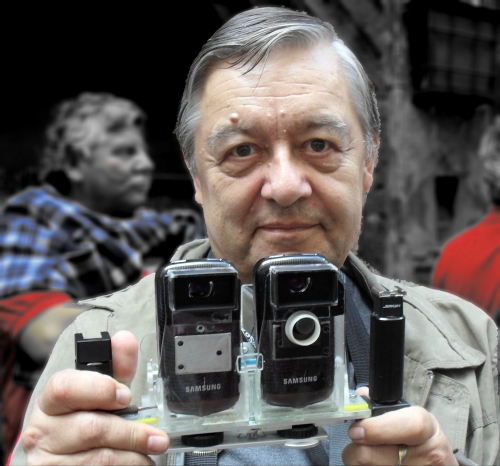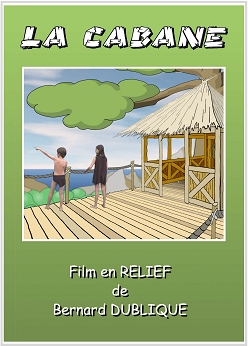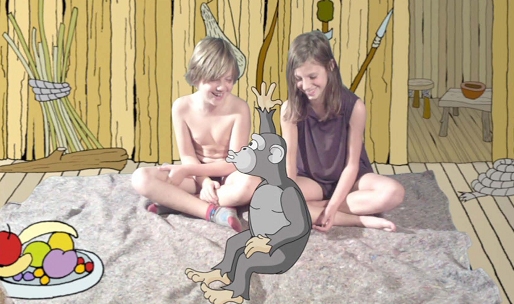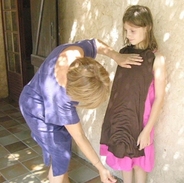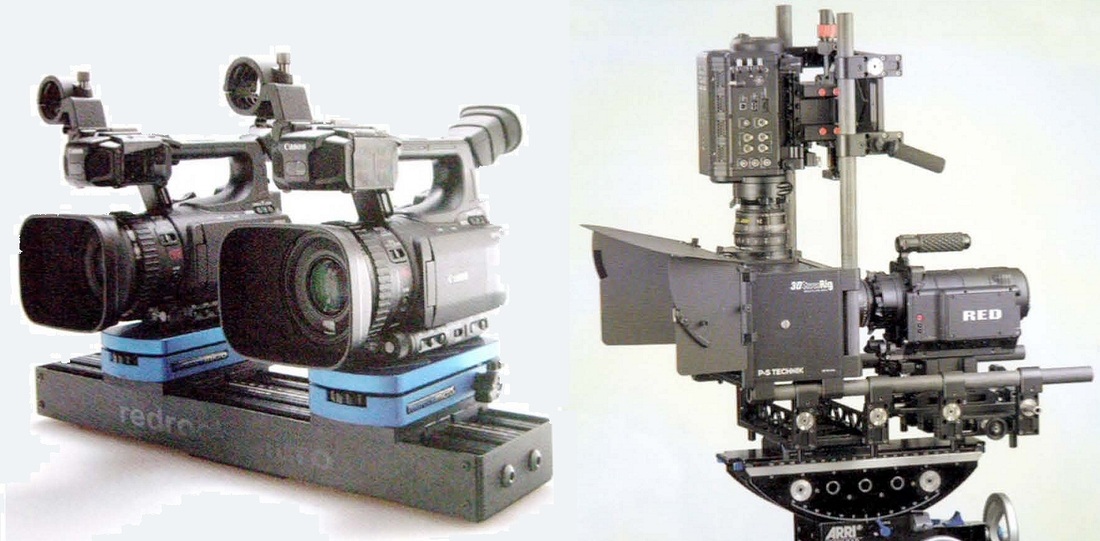Filming in 3D - by Bernard Dublique
During UNICA 2013 Bernard Dublique was to be seen working with this intriguing piece of camera kit.
When the French programme was presented, we all received special spectacles. Then we learned the secret: he is now making films in stereo.
When the French programme was presented, we all received special spectacles. Then we learned the secret: he is now making films in stereo.
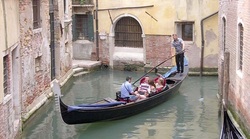
Why move to stereo?
In 2011 my wife and I went to Venice. During that I made a souvenir film in 3D with the help of two mini camcorders linked together. This stereo camera was light and compact.
It was a revelation. After watching the picture in stereo I decided to keep working this way … the difference between 2D and 3D was astonishing. Stereovision brings an incredible sense of presence. We are transported ... whereas in 2D we are simply spectators looking at a flat image.
In 2011 my wife and I went to Venice. During that I made a souvenir film in 3D with the help of two mini camcorders linked together. This stereo camera was light and compact.
It was a revelation. After watching the picture in stereo I decided to keep working this way … the difference between 2D and 3D was astonishing. Stereovision brings an incredible sense of presence. We are transported ... whereas in 2D we are simply spectators looking at a flat image.
Making of - LA CABANE
|
The first time our grandchildren visited us at Lesquin, they immediately realised it would be possible to build a cabin in the garden. That is always a dream for children, and sometimes also for grown-ups. As I myself am a big kid, I found the notion interesting and so I promised to make a film with them based around the cabin. He would be Tarzan and she, Jane, and the film would be called LA CABANE. The actors, who were aged eleven and nine, would be shot in 3D. They would get involved with cartoon scenery, which would also be in stereo. They would rub shoulders with cartoon characters.
|
The Theme:
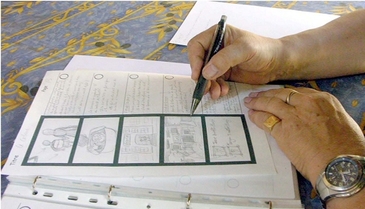
But before shooting the story had to be devised and the details tinkered with. I had a vague idea for a story ... a sort of renake of a Tarzan film, so that future viewers might recognise key elements in it.
Above all, the starting point was to show the power of the children's imagination after reading a Tarzan comic in the magical space of their cabin. They would really believe in it. After rapidly writing a synopsis, I drew a storyboard and I usually do. I always do that, regardless of the type of film involved.
Above all, the starting point was to show the power of the children's imagination after reading a Tarzan comic in the magical space of their cabin. They would really believe in it. After rapidly writing a synopsis, I drew a storyboard and I usually do. I always do that, regardless of the type of film involved.
Preparation
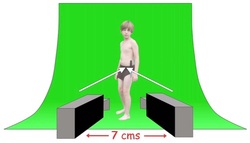
Techical Constraints
Without going too far into technical details, the cameras were spread 7cms apart and aimed at a point 1.50 metres away, which corresponded to the plane of the screen. Thus anything nearer than 1.5 metres would seem to jump out of the screen, and anything further away would seem to be "behind" the screen.
Without going too far into technical details, the cameras were spread 7cms apart and aimed at a point 1.50 metres away, which corresponded to the plane of the screen. Thus anything nearer than 1.5 metres would seem to jump out of the screen, and anything further away would seem to be "behind" the screen.
3D Cameras
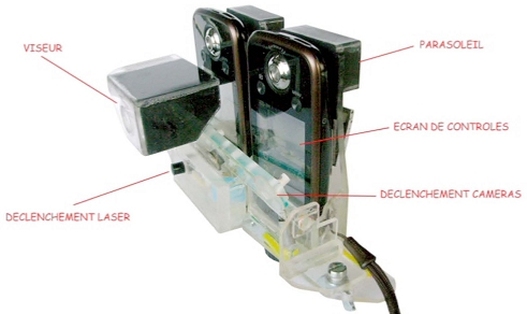
My home-made 3D camera shown here has been improved since the making of this film. Both cameras are now triggered simultaneously. The convergence and inter-eye distance are adjustable as is the vertical alignment (very important). A laser makes it possible control this alignment during editing.
A click sound allows shots to be synchronised for left and right images without the need for a clapperboard.
Commercial one-piece cameras are very limited, despite their high prices (between 3000€ and 4000€). The settings for their convergence and the inter-eye gap are too restricted. It is impossible to shoot close-ups and you cannot approach the rear planes. That is why professionals use a pair of cameras mounted in a horizontal rig, which lets them adjust the depth of scenes and more distant background planes - or in a vertical rig with a semi-silvered mirror for close-ups.
A click sound allows shots to be synchronised for left and right images without the need for a clapperboard.
Commercial one-piece cameras are very limited, despite their high prices (between 3000€ and 4000€). The settings for their convergence and the inter-eye gap are too restricted. It is impossible to shoot close-ups and you cannot approach the rear planes. That is why professionals use a pair of cameras mounted in a horizontal rig, which lets them adjust the depth of scenes and more distant background planes - or in a vertical rig with a semi-silvered mirror for close-ups.
